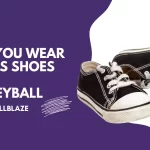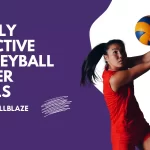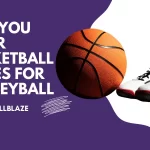It is likely that if you have attended volleyball matches, you have noticed players with taped fingers, and maybe you wondered why players tape their fingers.
In fact, the practice has a number of reasons for being followed.
The purpose of this article is to provide information concerning Why Do Volleyball Players Tape Their Fingers?
Check it out and learn things you didn’t know!
What Is Volleyball Finger Taping?

In volleyball finger taping, the fingers are taped up with athletic tape or stretchy compression tape, while gauze is inserted between the fingers to provide extra protection.
Sprained or injured fingers are treated with finger taping primarily to protect them from injuries.
Why Do Volleyball Players Tape Their Fingers?
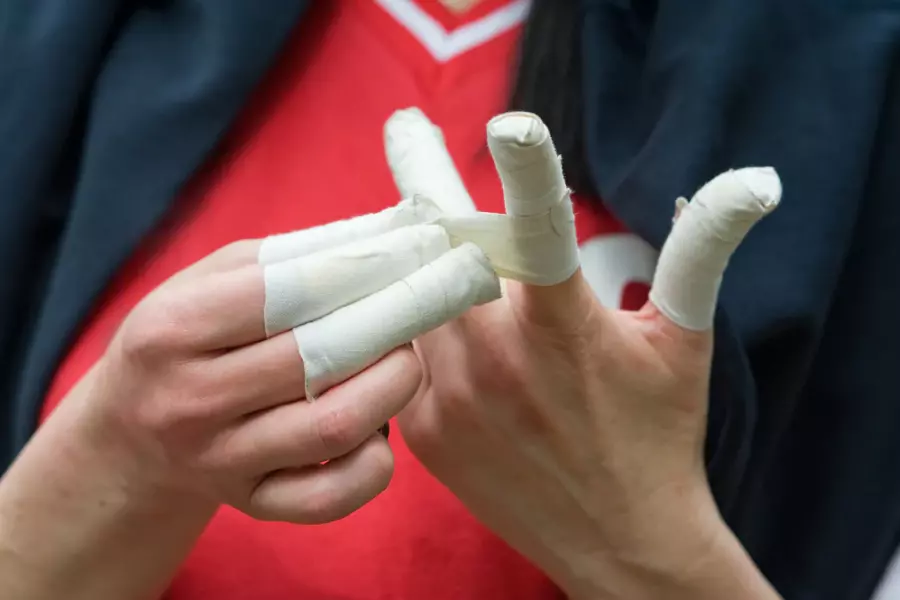
As a result of wearing tape on their fingers, volleyball players are able to play stronger.
There is a risk of injuries when players hit the ball without tape, as hitting the ball can be intense on the fingers. “Buddy taping” involves taping 2 fingers together, a common technique used by players.
As a result, the player’s fingers will have more strength for playing. During recovery from an injury, players tape their fingers in order to prevent further injury.
To properly tape your fingers, you’ll need the proper products, such as gauze and athletic tape.
You may enjoy reading When Is National Volleyball Day?
How to Tape your Fingers for volleyball?
Taping your fingers needs to be done correctly.
Your fingers will have the most power when you tape them properly, and they will be more protected from injury as well. It is important to note, however, that if you do not properly tape them, you will not reap these benefits. Following these steps will help you do it correctly:
1. Make sure the surface you are placing your hand on is flat and even. Starting with your non-dominant hand will make it easier to tape up your dominant hand if you need assistance. Tape doesn’t need to be applied yet.
2. You will be taping your fingers together, so take a piece of gauze and fold it up. While playing, the gauze will reduce friction while keeping your fingers comfortable.
3. The gauze should be tightly positioned between the fingers. The tape should be rolled along the fingers’ bases, overlapping it several times to secure the fingers and the tape. You don’t want your fingers to lose circulation if it’s too tight.
4. Your first and second fingers should have another line of tape between them. This will ensure that your fingers are secure. Ensure that your fingers are mobile after you have finished by flexing and contracting them.
5. If you want to do this on your dominant hand, you may want to have a teammate, coach, or trainer assist you.
6. If you play volleyball, make sure you protect your fingernails and fingertips by adding more tape. Make sure the tape reaches over the fingertips to cover the bottom of the nails. Additional protection can be added by topping the tape with another piece of tape.
You may enjoy reading What Is A Good Hitting Percentage In Volleyball?
Why Do Volleyball Players Wear Tape: Reasons

Tape is often used by volleyball players for a variety of reasons, primarily to aid in injury prevention and provide support. Tape is commonly worn by volleyball players for the following reasons:
Injury Prevention
Tape can prevent or minimize re-injury by supporting joints and muscles. To provide stability during volleyball’s dynamic movements, specific areas may be taped, such as ankles, wrists, and fingers.
Ankle Support
It is quite common for volleyball players to suffer ankle injuries as a result of jumping and lateral movements. Athletic tape is often used by players to prevent sprains and twists of their ankles.
Finger Protection
If a volleyball player has experienced injuries like jammed fingers or dislocations, he or she may tape their fingers as additional protection and support. In addition to preventing further damage, taping can help restrict movements in certain directions.
Wrist Support
For players who perform repetitive actions such as blocking or spiking, taping the wrists can provide additional support and stability. Joints and ligaments in the wrist are less likely to be strained by it.
Preventing Hyperextension
It is possible to apply tape strategically to prevent hyperextension or overflexion of certain joints. Particularly in sports requiring extreme movements, such as volleyball, this is extremely important.
Muscle Strain Prevention
Supporting strained or fatigued muscles with tape may be useful for athletes. Enhancing performance and reducing overuse injuries are possible benefits.
Rehabilitation
While returning to play, injured players may use tape to provide additional support to the affected areas. By providing stability and protection, it can aid in recovery.
Mental Confidence
In addition to providing physical support, athletes sometimes use tape for psychological reasons as well. Injuries can be avoided if an athlete feels physically supported, boosting their confidence.
Players may apply tape for different reasons and for different reasons depending on their individual preferences and needs. Taping techniques are often determined by athletes working closely with athletic trainers.
How Do You Tape Your Fingers?
Fingers can be taped in a variety of ways, depending on the reason for doing so.
A crisscross technique can be used, the fingernails can be taped, the fingers can be taped, and bending can be reduced by taping.
To ensure effective taping, we’ve included all the methods in the above section.
You may enjoy reading What Is A Side Out In Volleyball?
How Can I Speed Up the Healing of Jammed/Sprained Fingers From Volleyball?
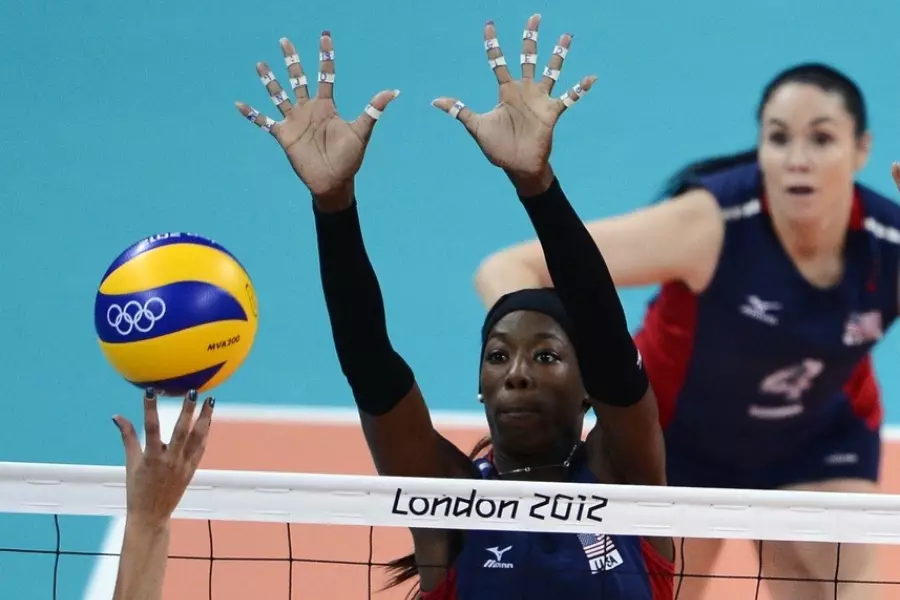
You know how players can get sprains and injuries out of nowhere if you are a volleyball player or understand the intricacies of the game.
In order to speed up the recovery process for your sprained fingers, keep the following points in mind!
- It is important to see a doctor if you are experiencing intense pain and can’t move your fingers because if left untreated, deforming can occur. The importance of medical assistance cannot be overstated
- If your fingers are jammed, you should use cold packs or ice bags instead of putting ice directly on them. Use a cold pack three times a day for 20 minutes on your fingers
- It is possible to reduce inflammation with painkillers such as aspirin and ibuprofen, but you should consult your doctor before taking them.
- It is better to use athletic tape during the healing process
- Tape over the joints to enhance protection and provide optimal performance
- Put a piece of tape on the finger that is healthy and the one that is injured
- Make sure you squeeze the rubber balls tighter when you have jammed fingers. Ten squeezes per practice should be done three times a day
- Reduce jamming in fingers by straightening fingers and moving every joint
- Hold every position for at least five seconds and make sure your fingers get the exercise they need
You may enjoy reading How to Use a Volleyball Rebounder?
Best Finger Tape For Volleyball
Hampton Premium White Athletic Finger Tape
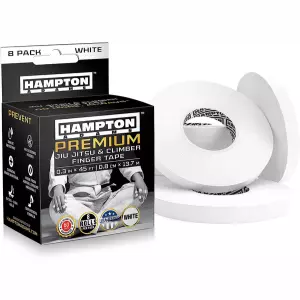
When it comes to finger tape, I wouldn’t spend a lot of time finding the best brand or style. The cost is very low, so try out a few types and see what you think.
The finger tape that we recommend is Hampton Premium White Athletic Finger Tape. In addition to keeping your fingers covered, the .3 inch width keeps them from being overprotected. You can retain your protection for the duration of the match with this tape (as much as you can expect).
In any case, if you find another brand that works for you, you should use it. You should always test any product before your match to ensure that it does not irritate your skin. It is possible for certain adhesives to cause skin irritation in some people. For 30 minutes prior to using the game, we recommend wearing a small amount on your finger.
You can also check other volleyball equipment like rebounders and knee pads.
Faqs
Does finger taping affect a player’s performance in volleyball?
Providing better grip and stability by taping fingers can actually boost a player’s performance.
How long does finger taping typically last during a volleyball game?
Taping can vary in duration, but it’s usually applied before and removed after games.
Can finger taping completely prevent finger injuries in volleyball?
There is no guarantee that it will prevent all risks, but it plays a significant role in lowering them.
Is finger taping allowed in all volleyball leagues and competitions?
Most volleyball competitions and leagues allow finger taping.
Are there any specific rules or guidelines for finger-taping in volleyball?
Players and opponents must be kept safe when taping, regardless of the rules and guidelines.
Conclusion
Strength and support must be provided by strategically taping volleyball fingers. By taping your finger during practice or competition, you are avoiding injuries that would require you to tape your finger between or during practice or competition, which could result in you having to tape your finger.
Keep yourself protected from injury if you want to continue to be a valuable member of your team.
You may enjoy reading How To Deflate A Volleyball?

